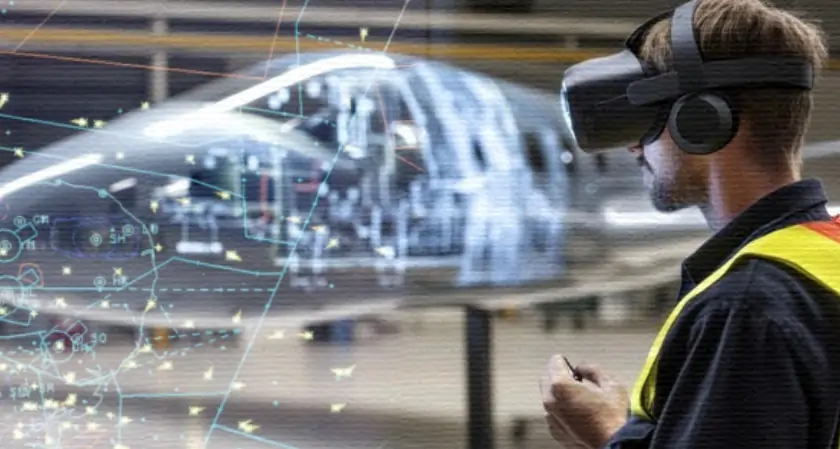Home Others Artificial Intelligence Keeping Skies Safe in the Age ...
Keeping Skies Safe in the Age of AI: Why Human Air Traffic Controllers Remain Irreplaceable
Artificial Intelligence

Business Fortune
12 September, 2024
To keep airplanes safe and operating efficiently both in the air and on the ground, air traffic control, or ATC, is essential. Artificial intelligence (AI) and digitization provide opportunities for ATC, including increased capacity, safety, and efficiency. Air traffic controllers (ATCOs) must remain at the center of these systems, nevertheless. This opinion is firmly supported by the International Federation of Air Traffic Controllers' Associations (IFATCA).
Air traffic controllers are in charge of safely and effectively guiding aircraft, controlling takeoffs and landings, keeping safe separations between aircraft while in flight, and responding to emergencies. Their work necessitates quick decision-making, acute situational awareness, and the capacity to multitask under pressure. Air traffic controllers provide vital talents, including judgment, adaptability, and the capacity to manage unforeseen circumstances that automated systems are now unable to duplicate, even with the growing capabilities of digital technology.
Digitizing Air Traffic Control: Safer Skies through Technology
In order to enhance communication, navigation, and surveillance (CNS), ATC is being digitized by incorporating cutting-edge technology. Large-scale projects like the Single European Sky ATM Research (SESAR) program in Europe and the Next Generation Air Transportation System (NextGen) in the United States have led to significant expenditures over the past several decades to modernize and improve the ATM system.
For instance, airplanes can broadcast their location, speed, and other information to ATC and other aircraft using Automatic Dependent Surveillance-Broadcast (ADS-B) technology. This lowers the chance of mid-air crashes, enhances situational awareness, and gives controllers access to more precise and up-to-date information. Additionally, datalink systems enable pilots and controllers to communicate using text messages in place of conventional voice communications. This improves intelligibility, lowers transmission failures, and—possibly most importantly—frees up radio airwaves. When datalink technologies like CPDLC are unavailable, radio telephony is frequently the cause of an ATC sector surpassing its maximum capacity.
Another important development is the use of digital or remote towers. This technology gives controllers a thorough overview of the airfield from a distance using high-definition cameras and sensors. Additionally, it can be advantageous, especially at smaller airports with fewer air traffic control services.
AI Enhancing Efficiency and Safety in Air Traffic Control
By automating repetitive operations and enhancing human talents, AI has the potential to completely transform ATC. For example, AI-driven predictive analytics can forecast weather, traffic patterns, and possible conflicts, giving controllers the ability to proactively manage traffic flows and make better judgments. AI algorithms are able to keep an eye on air traffic and spot possible issues before human controllers do. By offering the best possible solutions, these systems enable controllers to handle problems effectively and securely.
AI can also automate some parts of traffic management, like scheduling arrivals and departures, optimizing airspace utilization, and modifying aircraft trajectories to prevent congestion. This can lessen the controller's burden and increase efficiency. In addition, sophisticated voice recognition software can translate and decipher pilot-controller conversations, lowering the possibility of misunderstandings and offering real-time support.
The Irreplaceable Role of Human Controllers in ATC
Even though AI and digitization provide many advantages, human interaction is still crucial in ATC. Because of their extensive training and experience, air traffic controllers can manage challenging and unexpected circumstances. Automated systems cannot match their capacity to analyze complex data, use judgment, and act quickly in changing situations. Maintaining situational awareness, combining data from several sources, and comprehending the larger context of a situation are all skills that human controllers excel at. For safe and efficient air traffic control, an all-encompassing viewpoint is essential.
Human controllers are skilled in quickly evaluating problems, setting priorities, and organizing responses in emergency scenarios like equipment malfunctions or medical crises aboard an aircraft. An experienced controller may infer more from a pilot's tone of voice than from their uttered words. In ATC, good communication between controllers, pilots, and ground personnel is also essential. Human controllers are excellent at handling these exchanges, picking up on nuances, and establishing rapport via sympathetic and straightforward communication.
A group of committed experts known as the Joint Cognitive Human Machine System (JCHMS) was formed by IFATCA, and throughout the years, they have authored several scholarly publications and studies on the topic of artificial intelligence in ATMs. The following is stated in their study, "A framework for supporting adaptive human-AI teaming in air traffic control":
The reduction of production costs due to fewer air traffic controller expenses, such as training or the inefficiency and dependability of the practitioner is one of the main justifications for the use of new technology. Intentionally or unintentionally, designs that aim to maximize management values may prioritize managerial goals at the expense of humanistic design. As a result, practitioners have fewer degrees of freedom; buffers and margins are affected in ways that restrict the system's capacity to sustain and maintain flexibility in the face of unforeseen circumstances and uncertainty, which reduces the system's effectiveness.
Enhancing Air Traffic Control with AI – Supporting, Not Replacing, Humans
IFATCA promotes a balanced and integrative strategy to optimize the advantages of digitalization and AI while maintaining the fundamental function of air traffic controllers. In order to improve controllers' capabilities rather than replace them, technologies should be developed with the user in mind and in collaboration with them. In order to minimize the learning curve and the possibility of mistakes, interfaces should be simple to use.
Digital systems and AI should be used as cooperative instruments that give controllers useful information and assistance. The final say in choices should remain with controllers, whom AI should support rather than replace. For controllers, ongoing training and adaptability are essential as technology advances. Integrating new technology, improving digital literacy, and building resilience in handling every day and emergency circumstances should be the main goals of training programs.
To avoid becoming overly dependent on automated systems, it is essential to have strong safety precautions and fail-safe safeguards in place. Controllers must continue to be skilled at using technology and upholding strict safety regulations through frequent evaluations and simulations. AI systems have to be open and transparent, providing concise justifications for their decision-making processes.
Balancing Technology and Human Expertise for a Safer ATC Future
ATC's future depends on the ongoing blending of AI and digitization with the indispensable attributes of people. It is crucial to guarantee the dependability and robustness of digital and artificial intelligence systems. Any system failure might have serious repercussions, which emphasizes the necessity of redundancy and strong backup strategies. In order to avoid information overload and guarantee that controllers can handle technology efficiently, it is imperative to create smooth human-machine interfaces. In this context, user input and ergonomic design are essential.
To keep up with technological breakthroughs, regulations at the national, regional, and international levels must change to address concerns like data privacy and AI responsibility. For controllers to succeed in a digitalized world, support networks, skill development, and ongoing education are essential.


































